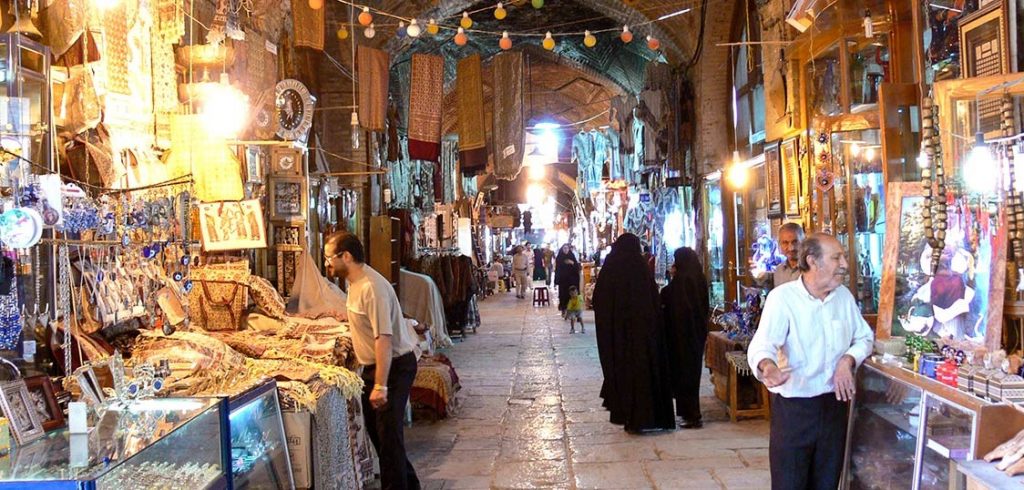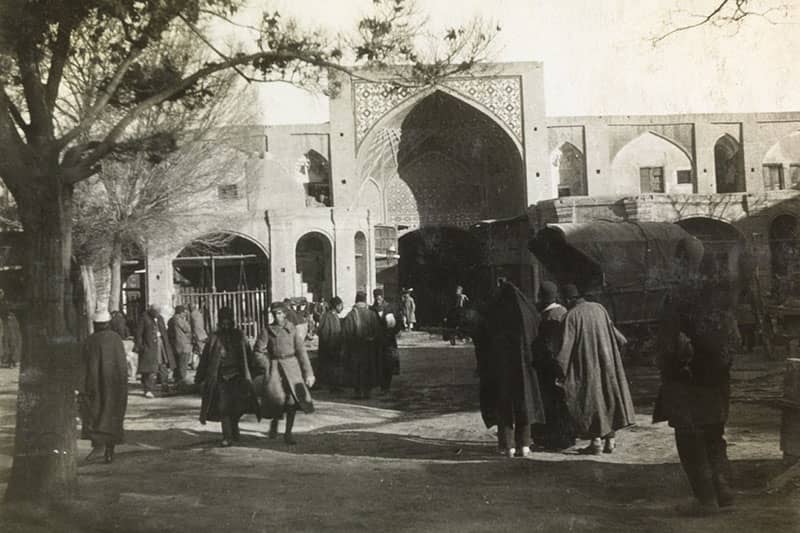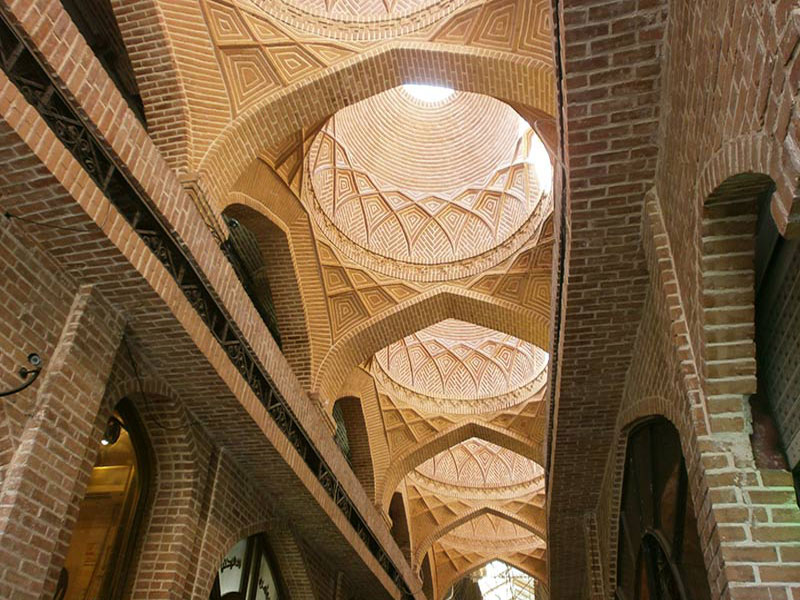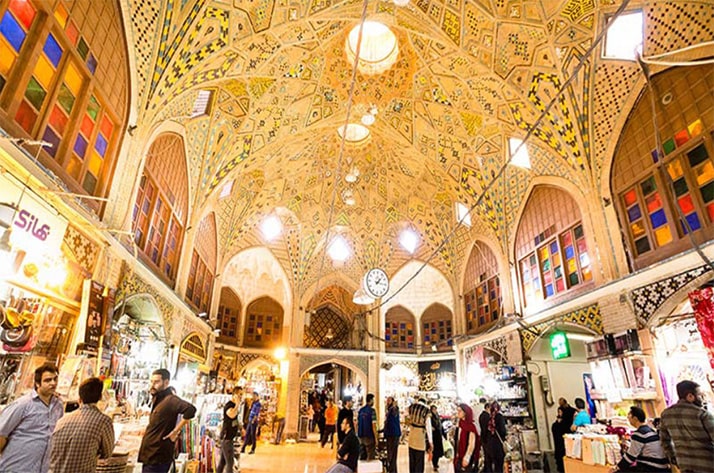Introduction to Tehran Grand Bazaar
Undoubtedly one of the significant economic and commercial sectors in Iran is the Tehran Grand Bazaar. The bazaar, also known as Khordad 15th, is the beating heart of the economy in Tehran.
The bazaar is also one of the important historical monuments in Iran in terms of architecture and history. One of the features of Tehran Bazaar is the existence of various businesses inside it, and by visiting the place, you can see different sections and professions.
Although with the increase of passages and large shopping centres in other parts of the capital, people visit the bazaar less than before, the Grand Bazaar of Tehran is still the centre of wholesale and transactions in the capital in various fields. Also, in Tehran Bazaar, you can experience the carriage ride in the paved area to get acquainted with the attractiveness of ancient Tehran.

History of Tehran Grand Bazaar
Tehran Bazaar includes historical antiquity, and the initial core of the bazaar has been considered to be from the Safavid era. In Thomas Herbert’s travelogue, a description of the Tehran Bazaar has created during the Safavid period, and these explanations showed that the bazaar included no roof at that time.
Tehran was chosen as the capital at the beginning of the rule of Agha Mohammad Khan Qajar, and extra attention was paid to the Tehran grand bazaar. Agha Mohammad Khan Qajar helped the prosperity of the bazaar by rebuilding corridors, cells, and other sections. Also, during the reign of Fath-Ali Shah Qajar, the bazaar complex expanded.
With the coming to power of Nasser al-Din Shah Qajar, the bazaar was roofed, the main entry called the Grand Bazaar was designed, and other gateways were formed. The period of Naser al-Din Shah should be considered one of the golden periods of Tehran Bazaar, in which many constructions took place in it.
The bazaar also played a significant role in cultural, political, and social developments in the Pahlavi period, and the colourful presence of bazaars in the constitutional period is well seen. Tehran Grand Bazaar is very important from a historical point of view due to its valuable historical buildings, such as Imam (Shah) Mosque and the Grand Mosque.

The Architecture of Tehran Grand Bazaar
The architecture and structure of the Tehran Bazaar are one of the most substantial parts, which include a collection of different corridors, domes, and multiplicative arches, each of which has been built with great care. With time and the more advanced urbanization, the Tehran bazaar has undergone many changes, but its old parts are still intact.
In the old parts of the bazaar, you can see multiplicative arches and domes that show off magnificently throughout the area; there are also many openings between the domes to provide interior light and help air circulation inside the bazaar.
Since the architecture of the bazaar has been changing throughout history, it is not possible to determine a specific architectural style for it, although, signs of Tehranian architecture can be seen in most parts. Of course, the new sections of the bazaar do not have a specific architecture, and new materials have been used for them.

The Bazaar has various parts such as Timcheh(arcade), Bazaar-e Amir, Rasteh (the main passage of bazaar), Passage, Mosque, Sabzeh Meydan entrance, Charsooq or Chaharsooq (the intersection of two main rows that have different architecture and detailed interior decorations), Tekyeh, and different underpasses. Chaharsooq is one of the oldest parts of the Tehran bazaar, which has a considerable style.
Tehran Bazaar has gradually developed, and due to the summer heat, parts of it have been roofed, new service spaces, such as coffee houses, baths, mosques, Zurkhanehs(a place for heroic sport), Hussainiya (a multitude hall for the mourning of Muharram and other commemoration rituals of Shia), and Saqqa Khane(small places for drinking water), were formed in the heart of the bazaar.

Keywords: Tehran Grand Bazaar, the Grand Bazaar of Tehran, Tehran Bazaar, The architecture and structure of the Tehran Bazaar, the Tehran bazaar.

